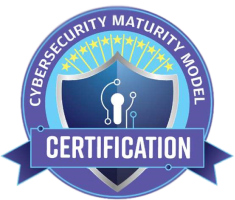 What is NVIDIA H100? Price, Specs and Decision Guide
What is NVIDIA H100? Price, Specs and Decision GuideSummary: The NVIDIA H100 Tensor Core GPU is the workhorse powering today’s generative‑AI boom. Built on th¯e Hopper architecture, it packs unprecedented compute density, bandwidth, and memory to train large language models (LLMs) and power real‑time inference. In this guide, we’ll break down the H100’s specifications, pricing, and performance; compare it to alternatives like the A100, H200, and AMD’s MI300; and show how Clarifai’s Compute Orchestration platform makes it easy to deploy production‑grade AI on H100 clusters with 99.99% uptime.
The meteoric rise of generative AI and large language models (LLMs) has made GPUs the hottest commodity in tech. Training and deploying models like GPT‑4 or Llama 2 requires hardware that can process trillions of parameters in parallel. NVIDIA’s Hopper architecture—named after computing pioneer Grace Hopper—was designed to meet that demand. Launched in late 2022, the H100 sits between the older Ampere‑based A100 and the upcoming H200/B200. Hopper introduces a Transformer Engine with fourth‑generation Tensor Cores, support for FP8 precision and Multi‑Instance GPU (MIG) slicing, enabling multiple AI workloads to run concurrently on a single GPU.
Despite its premium price tag, the H100 has quickly become the de facto choice for training state‑of‑the‑art foundation models and running high‑throughput inference services. Companies from startups to hyperscalers have scrambled to secure supply, creating shortages and pushing resale prices north of six figures. Understanding the H100’s capabilities and trade‑offs is essential for AI/ML engineers, DevOps leads, and infrastructure teams planning their next‑generation AI stack.
Before comparing the H100 to alternatives, let’s dive into its core specifications. The H100 is available in two form factors: SXM modules designed for servers using NVLink, and PCIe boards that plug into standard PCIe slots.
At the heart of the H100 are 16,896 CUDA cores and a Transformer Engine that accelerates deep‑learning workloads. Each H100 delivers:
Compared to the Ampere‑based A100, which peaks at 312 TFLOPS (TF32) and lacks FP8 support, the H100 delivers 2–3× higher throughput in most training and inference tasks. NVIDIA’s own benchmarks show the H100 performs 3×–4× faster than the A100 on large transformer modelst.
Memory bandwidth is often the bottleneck for training large models. The H100 uses 80 GB of HBM3 memory delivering up to 3.35–3.9 TB/s of bandwidtht. It supports seven MIG instances, allowing the GPU to be partitioned into smaller, isolated segments for multi‑tenant workloads—ideal for inference services or experimentation.
Connectivity is handled via NVLink. The SXM variant offers 600 GB/s to 900 GB/s NVLink bandwidth depending on modet. NVLink allows multiple H100s to share data rapidly, enabling model parallelism without saturating PCIe. The PCIe version, however, relies on PCIe Gen5, offering up to 128 GB/s bidirectional bandwidth.
The H100’s performance comes at a cost: the SXM version has a configurable TDP up to 700 W, while the PCIe version is limited to 350 W. Effective cooling—often water‑cooling or immersion—is necessary to sustain full power. These power demands drive up facility costs, which we discuss later.
Hopper introduces several features beyond raw specs:
The H100 brings a new level of speed and versatility, making it ideal for secure AI deployments across multiple users.
The H100’s cutting‑edge hardware comes with a significant cost. Deciding whether to buy or rent depends on your budget, utilization and scaling needs.
According to industry pricing guides and reseller listings:
Cloud providers offer H100 instances on a pay‑as‑you‑go basis. Hourly rates vary widely:
|
Provider |
Hourly Rate* |
|
Northflank |
$2.74/hr |
|
Cudo Compute |
$3.49/hr or $2,549/month |
|
Modal |
$3.95/hr |
|
RunPod |
$4.18/hr |
|
Fireworks AI |
$5.80/hr |
|
Baseten |
$6.50/hr |
|
AWS (p5.48xlarge) |
$7.57/hr for eight H100s |
|
Azure |
$6.98/hr |
|
Google Cloud (A3) |
$11.06/hr |
|
Oracle Cloud |
$10/hr |
|
Lambda Labs |
$3.29/hr |
*Rates as of mid‑2025; actual costs vary by region and include variable CPU, RAM and storage allocations. Some providers bundle CPU/RAM into the GPU price; others charge separately.
Renting eliminates upfront hardware costs and provides elasticity, but long‑term heavy usage can surpass purchase costs. For example, renting an AWS p5.48xlarge (with eight H100s) at $39.33/hour amounts to $344,530/yeart. Buying a similar DGX H100 can pay for itself in about a year, assuming near‑continuous utilizationt.
Beyond GPU prices, factor in:
Grasping these costs allows for a clearer picture of the actual total cost of ownership and aids in making an informed choice between buying or renting H100 hardware.
How does the H100 translate specs into real‑world performance? Let’s explore benchmarks and typical workloads.
Large Language Models (LLMs): NVIDIA’s benchmarks show the H100 delivers 3×–4× faster training and inference compared with the A100 on transformer‑based modelst. OpenMetal’s testing shows H100 can generate 250–300 tokens per second on 13 B to 70 B parameter models, while A100 outputs ~130 tokens/s.
HPC workloads: In non‑transformer tasks like Fast Fourier Transforms (FFT) and lattice quantum chromodynamics (MILC), the H100 yields 6×–7× the performance of Ampere GPUst. These gains make the H100 attractive for physics simulations, fluid dynamics and genomics.
Real‑time applications: Thanks to FP8 and Transformer Engine support, the H100 excels in interactive AI—chatbots, code assistants and game engines—where latency matters. The ability to partition the GPU into MIG instances allows concurrent inference services with isolation, maximizing utilization.
These capabilities explain why the H100 is in such high demand across industries.
Choosing the right GPU involves comparing the H100 to its siblings and competitors.
AMD’s MI300A/MI300X combine CPU and GPU in a single package, offering an impressive 128 GB of HBM3 memory. They offer a commitment to high bandwidth and energy efficiency. However, they depend on the ROCm software stack, which currently has less maturity and ecosystem support compared to NVIDIA CUDA. For certain tasks, MI300 might provide a more favorable price-performance ratio, though adapting models could present some difficulties. There are also alternatives like Intel Gaudi 3 and unique accelerators such as Cerebras Wafer‑Scale Engine or Groq LPU, though these are designed for specific applications.
NVIDIA's Blackwell architecture (B100/B200) is said to potentially offer double the memory and bandwidth compared to the H200, with anticipated release dates set for 2025. We may experience some initial limitations in supply. For now, the H100 continues to be the go-to option for cutting-edge AI tasks.
Buying or renting GPUs is only one line item in an AI budget. Understanding TCO helps avoid sticker shock later.
Running eight H100s at 700 W each consumes more than 5.6 kW. Data centers charge for power consumption and cooling; cooling alone can add $1,000–$2,000 per kW per year. Advanced cooling solutions (liquid, immersion) raise capital costs but reduce operating costs by improving efficiency.
Efficient training at scale relies on InfiniBand networks that offer minimal latency. Every node might require an InfiniBand card and switch port, costing between $2k and $5k. NVLink connections between nodes can achieve speeds of up to 900 GB/s, yet they still depend on dependable network backbones.
Elements like rack space, uninterruptible power supplies, and facility redundancy play a significant role in total cost of ownership. Think about the choice between colocation and constructing your own data center. While colocation providers often offer essential features like cooling and redundancy, they do come with monthly fees.
Although CUDA is available at no cost, creating a comprehensive MLOps stack involves various components such as dataset storage, distributed training frameworks like PyTorch DDP and DeepSpeed, experiment tracking, model registry, as well as inference orchestration and monitoring. Licensing commercial MLOps platforms and investing in support contributes to the overall cost of ownership. Teams should also consider allocating resources for DevOps and SRE professionals to effectively oversee their infrastructure.
A single server crash or a network misconfiguration can bring model training to a standstill.. For customer‑facing inference endpoints, even minutes of downtime can mean lost revenue and reputational damage. Achieving 99.99 % uptime means planning for redundancy, failover and monitoring.
That’s where platforms like Clarifai’s Compute Orchestration help—by handling scheduling, scaling and failover across multiple GPUs and environments. Clarifai’s platform uses model packing, GPU fractioning and autoscaling to reduce idle compute by up to 3.7× and maintains 99.999 % reliability. This means fewer idle GPUs and less risk of downtime.
Since mid‑2023, the AI industry has been gripped by a GPU shortage. Startups, cloud providers and social media giants are ordering tens of thousands of H100s; reports suggest Elon Musk’s xAI ordered 100,000 H200 GPUst. Export controls have restricted shipments to certain regions, prompting stockpiling and grey markets. As a result, H100s have sold for up to $120k each and lead times can extend months.
NVIDIA began shipping H200 GPUs in 2024, featuring 141 GB HBM3e memory and 4.8 TB/s bandwidth. Although just 10–15% more expensive than H100, H200’s improved energy efficiency and throughput make it attractive. However, supply will remain limited in the near term. Blackwell (B200) GPUs, expected in 2025, promise even larger memory capacities and more advanced architectures.
AMD’s MI300 series and Intel’s Gaudi 3 provide competition, as do specialized chips like Google TPUs and Cerebras Wafer‑Scale Engine. Cloud‑native GPU providers like CoreWeave, RunPod and Cudo Compute offer flexible access to these accelerators without long‑term commitments.
Given supply constraints and rapid innovations, many organizations adopt a hybrid strategy: rent H100s initially to prototype models, then transition to owned hardware once models are validated and budgets are secured. Leveraging an orchestration platform that spans cloud and on‑premises hardware ensures portability and prevents vendor lock‑in.
Selecting a GPU involves more than reading spec sheets. Here’s a step‑by‑step process:
By following these steps and modeling scenarios, teams can choose the GPU that offers the best value and performance for their application.
Clarifai isn’t just a model provider—it’s an AI infrastructure platform that orchestrates compute for model training, inference and data pipelines. Here’s how it helps you get more out of H100 and other GPUs.
Clarifai’s Compute Orchestration offers a single control plane to deploy models on any compute environment—shared SaaS, dedicated SaaS, self‑managed VPC, on‑premise or air‑gapped environments. You can run H100s in your own data center, burst to public cloud or tap into Clarifai’s managed clusters without vendor lock‑in.
The platform includes advanced scheduling algorithms like GPU fractioning, continuous batching and scale‑to‑zero. These techniques pack multiple models onto one GPU, reduce cold‑start latency and cut idle compute. In benchmarks, model packing reduced compute usage by 3.7× and supported 1.6 M inputs per second while achieving 99.999 % reliability. You can customize autoscaling policies to maintain a minimum number of nodes or scale down to zero during off‑peak hours.
Clarifai’s Control Center offers a comprehensive view of how compute resources are being used and the associated costs. It monitors GPU expenses across various cloud platforms and on-premises clusters, assisting teams in making the most of their budgets. Take control of your spending by setting budgets, getting alerts, and fine-tuning policies to reduce waste.
Clarifai ensures that your data is secure and compliant with features like private VPC deployment, isolated compute planes, detailed access controls, and encryption. Air-gapped setups allow sensitive industries to operate models securely, keeping them disconnected from the internet.
Clarifai provides a web UI, CLI, SDKs and containerization to streamline model deployment. The platform integrates with popular frameworks and supports local runners for offline testing. It also offers streaming APIs and gRPC endpoints for low‑latency inference.
By combining H100 hardware with Clarifai’s orchestration, organizations can achieve 99.99 % uptime at a fraction of the cost of building and managing their own infrastructure. Whether you’re training a new LLM or scaling inference services, Clarifai ensures your models never sleep—and neither should your GPUs.
The NVIDIA H100 delivers a remarkable leap in AI compute power, with 34 TFLOPS FP64, 3.35–3.9 TB/s memory bandwidth, FP8 precision and MIG support. It outperforms the A100 by 2–4× and enables training and inference workloads previously reserved for supercomputers. However, the H100 is expensive—$25k–$40k per card—and demands careful planning for power, cooling and networking. Renting via cloud providers offers flexibility but may cost more over time.
Alternatives like H200, L40S and AMD MI300 introduce more memory or specialized capabilities but come with their own trade‑offs. The H100 remains the mainstream choice for production AI in 2025 and will coexist with the H200 for years. To maximize return on investment, teams should evaluate total cost of ownership, plan for supply constraints and leverage orchestration platforms like Clarifai Compute to maintain 99.99 % uptime and cost efficiency.
Is the H100 still worth buying in 2025?
Yes. Even with H200 and Blackwell on the horizon, H100s offer substantial performance and are readily integrated into existing CUDA workflows. Supply is improving, and prices are stabilizing. H100s remain the backbone of many hyperscalers and will be supported for years.
Should I rent or buy H100 GPUs?
If you need elasticity or short‑term experimentation, renting makes sense. For production workloads running 24/7, purchasing or colocating H100s often pays off within a yeart. Use TCO calculations to decide.
How many H100s do I need for my model?
It depends on model size and throughput. A single H100 can handle models up to ~20 B parameters. Larger models require model parallelism across multiple GPUs. For inference, MIG instances allow multiple smaller models to share one H100.
What about H200 or Blackwell?
H200 offers 1.4× the memory and bandwidth of H100t and can reduce power bills by up to 50 %t. However, supply is limited until 2024–2025, and costs remain high. Blackwell (B200) will push boundaries further but is likely to be scarce and expensive initially.
How does Clarifai help?
Clarifai’s Compute Orchestration abstracts away GPU provisioning, providing serverless autoscaling, cost monitoring and 99.99 % uptime across any cloud or on‑prem environment. This frees your team to focus on model development rather than infrastructure.
Where can I learn more?
Explore the NVIDIA H100 product page for detailed specs. Check out Clarifai’s Compute Orchestration to see how it can transform your AI infrastructure.
© 2023 Clarifai, Inc. Terms of Service Content TakedownPrivacy Policy






© 2023 Clarifai, Inc. Terms of Service Content TakedownPrivacy Policy